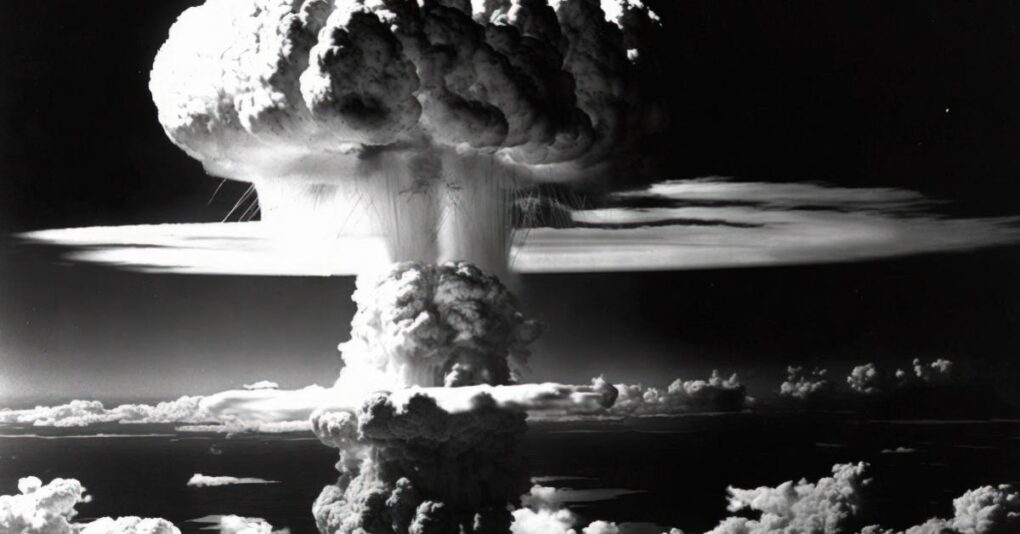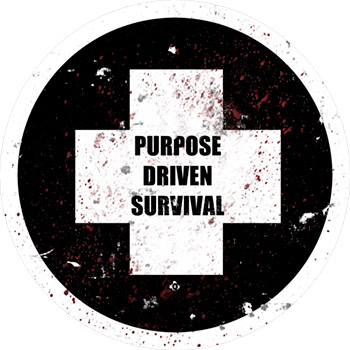
How do you conceal an atomic bomb? The same method you conceal anything else: you don’t enable individuals to know what truly taken place. Naturally, the magnitude and power of a mushroom cloud are plainly unmistakable. However, the effects of that bomb can be concealed and obfuscated from the basic population.
For over a year after the nuclear destruction of Hiroshima and Nagasaki, the complete extent of the bomb’s killing power was kept secret from the world. While little known today, the fact was only exposed due to the actions of a single war reporter and the stories of six people who were forever scarred by what they saw.
On August 6, 1945, a nuclear weapon was utilized in war for the very first time in history versus the city of Hiroshima. Simply hours after the battle of Hiroshima, President Harry Truman made a radio broadcast to the world, announcing both the fate of the city along with the United States’ ownership of atomic bombs. Truman stressed the power of these new weapons, mentioning that they had the explosive power of “twenty thousand lots of TNT.”
On August 9, the city of Nagasaki was the target of the 2nd– therefore far, last– usage of nuclear weapons in history. 6 days later, the Japanese gave up.
Not long after the formal end to the war, four main investigative groups were sent out into both cities to provide an in-depth report on the impact and consequences of the bombings. When they arrived, what they discovered surprised them: even months after the bombs were dropped, people inside the cities were still passing away. As Japanese physicians dealt with these clients in the consequences of the battles, they determined their symptoms as consistent with radiation poisoning. Overexposure to radiation was not an unique concept in the medical field, however the idea that radiation from the bomb would be a significant cause of death was never ever thought about by the Americans.
The scientists of the Manhattan Job– who had established the bomb– assumed that the initial surge would eliminate everyone and that there would be nobody left alive to be impacted by radiation. While thousands were killed in the blasts at Hiroshima and Nagasaki, thousands more would pass away from radiation burns in the following days, and thousands more from the abovementioned radiation poisoning in the coming weeks, months, and years.
Ultimately, the harrowing impacts of radiation on the populations of Hiroshima and Nagasaki were downplayed in the official reports. This was most likely done for the sake of PR. The United States was rapidly participating in a “cold war” with the Union of Soviet Socialist Republics (USSR), and it desperately wanted to portray itself as an ethical crusader against the evil and godless Communists. If the horrific fact about the impact of nuclear weapons on Hiroshima and Nagasaki were revealed, other countries– particularly Japan– may not be so amicable towards the American sphere of influence. While there were some, specifically in the upper echelons of military and political leadership, who were aware of the true scope of death the bombs had actually brought, it was thought about highly verboten to discuss or mention it at all.
For over a year after the bombings, any details about Hiroshima and Nagasaki was heavily censored. Although the Office of Censorship was closed down at the end of the war, the War Department released an official declaration worrying the bombs stating, “It is the responsibility of every person, in the interest of national security, to keep all discussion of this subject within the limitations of details revealed in authorities releases.”
Shortly after Douglas MacArthur developed his interim government in Japan, both cities were cordoned off and any access to them was strictly restricted. Even most Japanese citizens were unaware of the complete scope of the bomb’s results as the Japanese government confessed to little more than both cities’ damage at the hands of a brand-new and effective weapon. The vast majority of Americans had assumed that the blast had actually eliminated everybody in a split second, which was that. Truman’s allusion to the explosive power of the bombs definitely produced that impression, if just implicitly.
In early 1946, a war reporter called John Hersey was sent out to Hiroshima on special assignment for the New Yorker. He started his profession in journalism composing for Time Magazine in 1937 and spent the war years reporting from both the European and Asian fronts. During his time in Hiroshima, he talked to various hibakusha— the Japanese term for survivors of the atomic bomb. He was surprised by what he heard and knew that the world needed to hear it too.
When he went back to the United States, he assembled the stories he heard into a thirty thousand– word essay describing the battle of Hiroshima and its consequences from the point of view of 6 different survivors. The initial strategy was for the essay to be serialized, but the editors at the New Yorker chosen to run it in its totality, devoting the entire August 31, 1946, issue to Hersey’s work– the very first and only time the New Yorker has actually run as a single story. The name of the essay was easy, but it would soon remain in the hands of readers all around the world: “Hiroshima.”
Hersey did not avoid the graphic reality of the battle as well as the disorderly after-effects for those still left alive. One particularly gut-wrenching account comes from the perspective of Reverend Kiyoshi Tanimoto, pastor of the Hiroshima Methodist Church. After making it through the blast and finding his household in debris of the city, he attempted to help the injured around him on a boat to give a help station:
Mr. Tanimoto found about twenty males and females on the sandspit. He drove the boat onto the bank and advised them to get aboard. They did not move and he realized that they were too weak to raise themselves. He reached down and took a female by the hands, but her skin slipped off in substantial, glove-like pieces. He was so sickened by this that he had to sit down for a moment. Then he went out into the water and, though a little guy, raised numerous of the guys and females, who were naked, into his boat. Their backs and breasts were clammy, and he remembered uneasily what the excellent burns he had seen during the day had been like: yellow initially, then red and inflamed, with the skin sloughed off, and finally, in the evening, suppurated and foul-smelling. With the tide increased, his bamboo pole was now too short and he needed to paddle most of the method throughout with it. On the other side, at a higher spit, he lifted the slimy living bodies out and brought them up the slope far from the tide. He had to keep purposely duplicating to himself, “These are humans.” It took him three journeys to get them all throughout the river. When he had actually completed, he chose he had to have a rest, and he went back to the park.
All three hundred thousand copies of the August 31, 1946, edition of the New Yorker offered out immediately. Individuals throughout the world were horrified by what they check out. The experiences of these 6 individuals, although just a little part of the city’s population, permitted an unwary world to experience just a portion of the suffering the bomb had actually triggered. Before “Hiroshima,” the world had actually remained in a state of joyous ignorance concerning the truths of nuclear weapons. That veil was now by force and irrevocably torn from their eyes.
Not long after its publication, “Hiroshima” would be turned into a book with the very same title and immediately became a bestseller. Shockingly, the MacArthur government in Japan prohibited “Hiroshima” from being printed in the country. It was just three years later on in 1949, when the post was translated in Japanese, that the government permitted its publication. The short article was the first time numerous Japanese found out the fact about the sufferings that their countrymen had actually withstood.
The legacy of Hersey’s “Hiroshima” is twofold. First, it demonstrated the true danger of nuclear weapons. The popular Swimsuit Atoll checks occurred just two months prior to Hersey’s publication, and the American individuals were now– for the first time– totally familiar with the ramifications of entering the Atomic Age. In simply a few years’ time, the USSR would remain in possession of nuclear weapons of their own, undoubtedly leading to a nuclear arms race between the 2 powers. The theoretical state of “equally assured destruction” became a very present reality.
This represented the power of the pen versus the censorship of the state. “Hiroshima” was among the very first times in American history that the federal government was exposed as being unethical at best, and phonies at worst. As Randolph Bourne when famously stated, “War is the health of the state.”
The state is most empowered to wage war when it obfuscates the truth and avoids the population at large from comprehending the consequences of its actions. When this reality is exposed, however, the crimes of the state can be brought into the light for all to see. What the story of John Hersey clearly illustrates is that a building of censorship, no matter how prevalent and effective, can be reduced by simply one person willing to expose lies and declare what is true.

